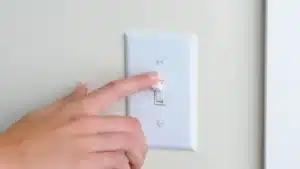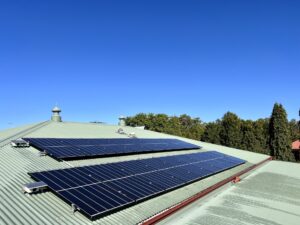With the recent slashing of the solar feed-in tariff in Queensland (QLD), many solar owners are left wondering how to maximize their investment in solar energy. The good news is that hosting a battery system can be a game-changer. This article will delve into the current solar feed-in tariff rates and discuss how battery storage can enhance your solar experience.
What is the Current Solar Feed-In Tariff in QLD?
Understanding the Feed-In Tariff Rate Changes
As of now, the solar feed-in tariff in QLD has seen some significant reductions. In recent years, the Queensland Competition Authority (QCA) has adjusted the feed-in tariff rates, which has raised eyebrows among solar owners. Presently, the minimum feed-in tariff offered by electricity retailers stands at a mere few cents per kilowatt-hour. This is a stark contrast to the golden days of the 44 cent feed-in tariff scheme which comes to an end in 2028. The adjustments have made it essential for solar owners to stay informed about their options and adapt to the evolving landscape of solar feed-in tariffs in QLD.
What are the Historical Rates for Solar Feed-In Tariff in QLD?
Looking back at the historical rates for solar feed-in tariffs in QLD, we see a dramatic shift. The peak of the feed-in tariff came with the premium rates granted to those who installed their rooftop solar systems during the early days of the solar boom. Back then, the 44 cent feed-in tariff was the golden standard, a lucrative incentive encouraging Queenslanders to embrace solar power. Fast forward to 2025, and the situation is very different. With the feed-in tariff rate slashed for Queenslanders in 2025, the financial returns on solar exports have decreased, prompting many to reconsider how best to utilise their solar systems.
How the Current Tariff Compares to Previous Rates
When comparing the current solar feed-in tariff to the previous rates, it’s like night and day. The transition from 44 cents to significantly lower rates has led to a re-evaluation of solar investments. The diminishing returns on solar exports back to the grid have made it crucial for solar owners to explore alternatives, such as battery systems, to optimise their electricity bill savings and overall efficiency. By relying less on the grid and more on their solar power systems, homeowners can buffer against tariff changes and still enjoy the benefits of sustainable energy.
There’s Never Been A Better Time To Host A Home Battery
Solar Feed-In Tariff In Regional Queensland, 2025-26
There is an estimated solar feed in tariff (FiT) of 8.69 c/kWh for regional Queensland in 2025–26 for Ergon from 1st July 2025, which is 30% lower than the current solar feed-in tariff. This drop is due to a decrease in energy costs and reflects the reduced value of solar export energy during the day. The trend of falling feed-in tariffs support battery storage as an alternative and will encourage home owners to shift their focus to optimise for self-consumption, including EV charging.

The Benefits of Battery Storage for Solar Systems
Hosting a battery with your solar system can seriously enhance your energy independence. With a battery storage system, you can store excess solar power generated during the day and use it during peak hours when electricity rates are higher. This not only reduces your reliance on the grid but also allows you to get the most out of your solar power system. By utilising battery storage, you can turn your home into a mini power station, making it a savvy investment in the long run and can also support the wider community by joining a Virtual Power Plant (VPP).
How Battery Hosting Can Affect Your Electricity Bill
When you host a battery, your electricity bill can take a nosedive. Instead of exporting all your excess solar power back to the grid, you can store it for personal use. This means you’re not just relying on the feed-in tariff to save money; you’re actively reducing your consumption from your electricity retailer. The result? A more manageable electricity bill that reflects your commitment to solar energy and sustainability. It’s a win-win situation, and with the right battery system, you can easily transform your energy usage habits.
Choosing the Right Battery System for Your Solar Power Needs
Choosing the right battery system is crucial for maximising your solar power benefits. There are several options available, ranging from no upfront cost systems, small home batteries and larger systems that can support more extensive solar setups (including no upfront cost commercial options for your business). When selecting a battery, consider your energy consumption patterns, the size of your solar power system, and your budget. Investing in a quality inverter paired with a compatible battery will ensure that you’re making the most of your solar energy, ultimately enhancing your overall energy efficiency and savings.
What Changes Can We Expect in the Solar Feed-In Tariff in the Future?
Predictions for Future Tariff Rates in QLD
As we look towards the future, predictions for solar feed-in tariff rates in QLD suggest that we may continue to see fluctuations. With the Queensland government implementing changes to energy policies and regulations, it’s essential to keep an eye on potential impacts on feed-in tariffs. While some experts believe that rates may stabilise, others caution that competitive market forces could lead to further reductions. Staying informed will be key for solar owners looking to navigate these changes effectively.
How To Prepare For Changes In The Solar Feed-In Tariff Landscape
To prepare for potential changes in the solar feed-in tariff landscape, it’s wise to stay proactive. Invest in a battery system to buffer against tariff fluctuations and maximise your savings by joining the Horan & Bird Solar Virtual Power Plant (VPP). By staying informed and adaptable, you can make the most of your solar power system, regardless of the changing tariff landscape. Get in touch with Horan & Bird Solar to discuss your options.

Founder of Horan & Bird. Director of Master Electricians Australia and Board Member of Solar Accreditation Australia. John has played a key entrepreneurial role in the transformation of the Energy Landscape in Queensland.






